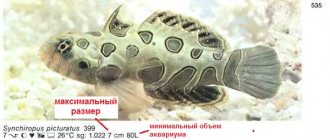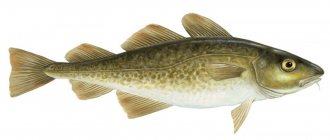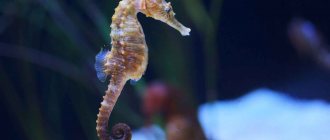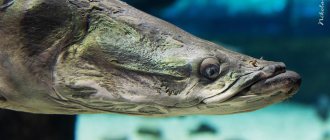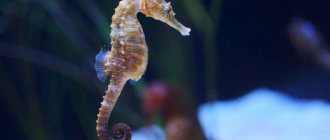author: fisher 03/15/2013 0 Comments
Family: Pomacentridae
coral fish
Coral fish of the genus Amphiprion are perhaps more often than others kept in marine aquariums. The genus Amphiprion belongs to the Pomacentridae family and has about 26 species. Depending on the species, the color of the fish may consist of white, yellow or black stripes and spots on a red, yellow and orange background. Due to their bright colors, amphiprions are popularly called “clown fish”. Clownfish are fairly common in the Indo-Pacific basin, but are completely absent from the Atlantic. They are small, in nature their size does not exceed 12-13 cm, and in captivity the total size is smaller - no more than 9 cm.
Of the 26 species, only about ten are available for keeping in aquariums, the rest either live in places difficult to catch or are generally prohibited from catching.
The following types of amphiprions : A. clarkii, A. ocellaris, A. melanopus, A. tricinctus, A. perideraion.
The Walt Disney film studio chose this fish as the main character of one of its full-length animated films. Having given him a name - Nemo, this is exactly what the cartoon itself is called. After its release, in some Western countries, the name Nemo became a household name in relation to amphiprions .
Amphiprion ocellaris
What is symbiosis
In the wild, phenomena are often observed when living organisms belonging to different species enter into relationships with each other.
Depending on how beneficial the union is for the partners, symbiosis is divided into several types:
- commensalism;
- amenalism;
- parasitism;
- mutualism.
The latter type describes the mutually beneficial relationship between clownfish and sea anemones.
Interactions that are beneficial for one partner but indifferent to the other partner are called commensalism. Amensalism is a union that is indifferent to one, but harmful to the other symbiont. This is a form of relationship in which one organism is a habitat or source of food for another (parasite).
Nature knows many examples of amazing symbioses
Nutrition
In nature, the clown fish often feeds on the remains of fish that were not eaten by its friend the sea anemone. In an aquarium, amphiprions are absolutely not picky about food. They happily eat specialized dry food for reef fish; they will not refuse brine shrimp, shellfish, finely chopped shrimp, squid, or a mixture of fish meat and algae.
Video: feeding amphiprions
Feeding should be done several times a day, in small portions that the fish can swallow in a few minutes.
Description of clown fish
The species belongs to the family Pomacentridae. Their color varies from deep purple to yellow, deep orange and red. The white stripes are sometimes edged with black, reminiscent of clown makeup. Thanks to this feature, the fish got its name.
On average, the size of amphiprions is within 7 cm. Some individuals reach 11 cm. The body of clown fish is flattened, the back is higher than the rest of the body. The dorsal fin consists of two parts, the first of which is hard, and the back is more delicate. The pectoral fins are quite voluminous and resemble a fan. The anal fin is located next to the caudal fin.
Attention!
Only females are born. Males appear in certain conditions. If the main female of the flock dies, the male can change sex.
The hormonal changes occurring in the body have not been studied in detail, but this process ensures the safety of the population. Females are larger and more aggressive than males. Clowns live in packs in a certain territory with an established hierarchy. Life expectancy in natural conditions reaches ten years or more. In captivity, fish can live up to 25 years.
Its habitat covers the waters of the Pacific and Indian Oceans. Amphiprions have been found off the east coast of Africa, in the coastal areas of Japan and in the coral reefs of Australia.
Symbiosis with sea anemones is a prerequisite for the viability of fish. There are cases when clowns do not find suitable sea anemones. Then their habitat becomes coral grottoes and underwater rock gorges.
The clown fish is called so because its appearance is similar to the attire of a circus performer.
Reproduction and lifespan
In the ocean, in its native element, a clown fish lives for about 10 years, but in an aquarium its life expectancy doubles.
An interesting fact is that all hatched Amphiprion fry are initially males. They have both male and female reproductive organs, but the former are well developed, the latter are in their infancy.
As they grow, the largest individuals transform into females. If one of them dies, the dominant male changes sex and takes the vacant place. He then chooses a sexual partner from the remaining males.
For spawning, clowns can also use a regular ceramic pot.
Clown fish are distinguished by monogamy; in nature, the stimulus for the beginning of reproduction is moonlight, in which male clown fish become more active. In captivity, this factor is not particularly important.
The female lays eggs next to the sea anemone, and in its absence, near corals or grottoes. The process takes about 2 hours and occurs mainly in the evening. Experienced breeders recommend turning off the lights in the aquarium between 10 pm and 11 pm and maintaining the water temperature at 26°C.
The new dad protects the clutch, removes unfertilized eggs from it, and ventilates it. Depending on the age and size of the female, during one spawning she can bring from 400 to 1500 eggs. The incubation period lasts from 7 to 10 days, after which the fry hatch. Their starting food is plankton.
The father will guard them until adulthood, but in practice the young are usually placed in a separate container. This does not affect their development and growth dynamics.
Video: breeding of sea clowns
Description of sea anemone
Sea anemones or anemones belong to the class of coral polyps. They have a cylindrical body, from the upper part of which stinging tentacles extend, surrounding the oral cavity.
The sea anemone does not have a mineral skeleton; its supporting function is performed by a muscular leg, inside of which there is an intestinal cavity.
Anemones lead a predominantly sedentary lifestyle; some species can move slowly along the seabed. They are attached with the sole to solid ground or objects. The body of the sea anemone is mobile; it can deviate in different directions.
Sea anemone has a soft body compared to other corals
Symbiosis of clownfish and sea anemone
Clowns and sea anemones enter into a mutually beneficial relationship. Fish cannot exist outside the neighborhood. In case of danger of attack by predators, clowns hide among the stinging tentacles. Only in rare cases, when clowns were unable to find their sea anemone, do they lead an independent lifestyle. The reason why sea anemones allow fish to approach them is not fully understood. It is assumed that this occurs due to the mucus that covers the body of clown fish from touching the polyp.
When meeting its partner, the fish carefully touches the tentacles of the sea anemone. Each time the touches become longer. Gradually they develop immunity to the poison.
After a few hours, clowns can swim close to the tentacles themselves, and even later the sea anemone becomes their habitat.
Clownfish are territorial and rarely stray from their home. Twice a month, eggs are laid under the anemone, so future offspring are protected from some predators. The emerging fry rise to the surface. Small fish must return to the sea anemone to survive.
Clowns, for their part, act as protectors of the sea anemones and drive away unwanted guests from their shelter. Butterfly fish and crabs love to feast on the tentacles of polyps. When they approach, clowns behave actively and often aggressively.
Note!
The constant movement of fish stimulates the supply of oxygen to the tentacles of sea anemones, which is another positive aspect of the proximity of marine inhabitants.
Sometimes the fish feed on sea anemone excrement, partially preserved in almost its original form due to the fact that the polyp ate more than it could digest. There are cases when a clown feeds his ally. Sometimes the sea anemone helps fish catch larger prey by paralyzing it with its tentacles.
More than 10 fish of the same species can live on a polyp. The flock includes young and adult individuals reaching 15 cm.
The symbiosis of clown fish and sea anemone is one of the most beautiful and fascinating phenomena
Where live
The described sea creatures live not only in the tropical waters of the Indian and Pacific oceans (at a depth of about 15 meters), but also in many home aquariums, you just need to create optimal conditions for them to exist in captivity. In their natural environment, they can be found in the thickets of coral reefs, in close proximity to sea anemones, with which they get along well in any environment: indoors and in the wild.
By the way, when kept in an aquarium, the life of “clowns” is longer (often up to 18 years) , since the risk of a predator attack is reduced to zero.
Important! Before buying a clown fish, ask where it lived before, because a fish raised in captivity will more easily adapt to your conditions, while a fish recently caught from the ocean can quickly die in the aquarium (it will be more difficult to care for it).
Which sea anemone is best for clownfish?
In different sources, information about the number of possible unions of sea creatures differs from each other. Existing species of clownfish that necessarily inhabit sea anemones belong predominantly to the genus Amphiprion (only one species belongs to the genus Premnas).
Among them, the most common symbiotic relationships are:
- Clark's clownfish (Clarkii) enters into symbiosis with ten sea anemones: Cryptodendrum adhaesivum, Entacmaea quadricolor, Heteractis aurora, Heteractis crispa, Heteractis magnifica, Heteractis malu, Macrodactyla doreensis, Stichodactyla gigantea, Stichodactyla haddoni and Stichodactyla mertensii.
- The Red Tomato Clown (Amphiprion frenatus) is an aggressive species in the coral reef community and lives with the sea anemone Entacmaea quadricolor.
- A popular aquarium clownfish, Amphiprion ocellaris forms an alliance with the anemones Heteractis magnifica, Stichodactyla gigantea and Stichodactyla mertensii.
- The orange amphiprion percula in its natural environment enters into symbiosis with the sea anemones Heteractis magnifica, Stichodactyla gigantea, Stichodactyla haddoni. In captivity it feels good even without a symbiont.
- Premnas biaculeatus (Moorish clown) prefers the sea anemone Entacmaea quadricolor as an ally.
- The fire clown Amphiprion ephippium selects the sea anemones Entacmaea quadricolor or Hetaractis crispa and Stichodactyla haddoni for a symbiotic relationship.
- The Pied-nosed Amphiprion akallopisos (white-backed) is distinguished by a white stripe running from the snout to the caudal fin. In the wild, it interacts with the anemones Heteractis magnifica and Stichodactyla mertensii.
- Amphiprion sandaracinos (orange clown skunk) is similar to akallopisos. Rarely enters into symbiosis with Heteractis crispa and most often with Stichodactyla mertensii.
Sometimes aquarists encounter a phenomenon where clown fish are not interested in a polyp placed in an aquarium. They swim nearby, but do not settle in the sea anemone. This is probably due to the lack of danger from predators. However, when stressful conditions are created for the fish, they may change their minds. For example, in the case of a temporary stay of clowns in another aquarium, after which they are returned to their original place.
Clowns never leave or swim far from “their” sea anemones
The symbiosis of sea anemone and clown fish helps preserve the population of the species. Such relationships were built during evolution and once again prove the unity of nature. The symbiosis is interesting to watch. For this reason, aquarists often place clownfish and sea anemones together.
Did you learn something new? Share in the comments!
Reproduction of amphiprions in natural conditions
Amphiprions are hermaphrodites. The largest fish in the group is the female, slightly smaller in size is the active male, the rest, smaller individuals, are males. If a female dies, her place is taken by an active male, who changes his sex, after which he quickly increases in size. One of the small fish grows up and becomes an active male.
Amphiprion rubrocinctus
If an active male dies, his place is immediately taken by one of the smaller males. This feature of amphiprions is successfully used in the aquarium hobby: it is enough to put two males of different sizes in an aquarium, and over time they will become a pair.
If a couple lives in health for a long time, small individuals do not grow during this entire period and remain just as small.
This ability to change sex is not so uncommon among marine fish; it guarantees the preservation of the species.
Clown fish lay their eggs on any flat surface, close to, or better yet, directly under the tentacles of the sea anemone. The clutch is guarded by the male, the fry appear after 7-10 days at night. The appearance of fry is determined by the natural biological rhythm associated with the phases of the moon. The larvae, since it is still difficult to call them fry at this time, rise to places where small plankton are concentrated, where they actively feed and grow. Most of the fry become easy prey for numerous predators, and those that survive urgently seek protection in the tentacles of the sea anemone.
In nature, amphiprions often share their sea anemones with other fish, various invertebrates and crustaceans. Among the tentacles of sea anemones, small crabs Petrolisthes maculatus and shrimp of the genus Periclimenes live in pairs. At the same time, amphiprions simply do not pay any attention to them.
By the way, amphiprions are one of the few species of marine fish that are successfully bred in marine aquariums.
Clown fish can be safely recommended to novice marine aquarium lovers as the easiest coral fish to keep.
Popular types of clown fish: Show
| Amphiprion ocellaris - 5 cm | Brown clownfish (Premnas biaculeatus) – 10 cm | Red amphiprion (Amphiprion frenatus) – 7.5 cm |
| Amphiprion clarkii – 10 cm | Tomato amphiprion (Amphiprion ephippium) – 7.5 cm | Pink amphiprion (Amphiprion perideraion) – 5 cm |
| Amphiprion skunk (Amphiprion akallopisos) – 5 cm | Amphiprion nigripes – 6.25 cm | Orange amphiprion (Amphiprion percula) – 10 cm |


